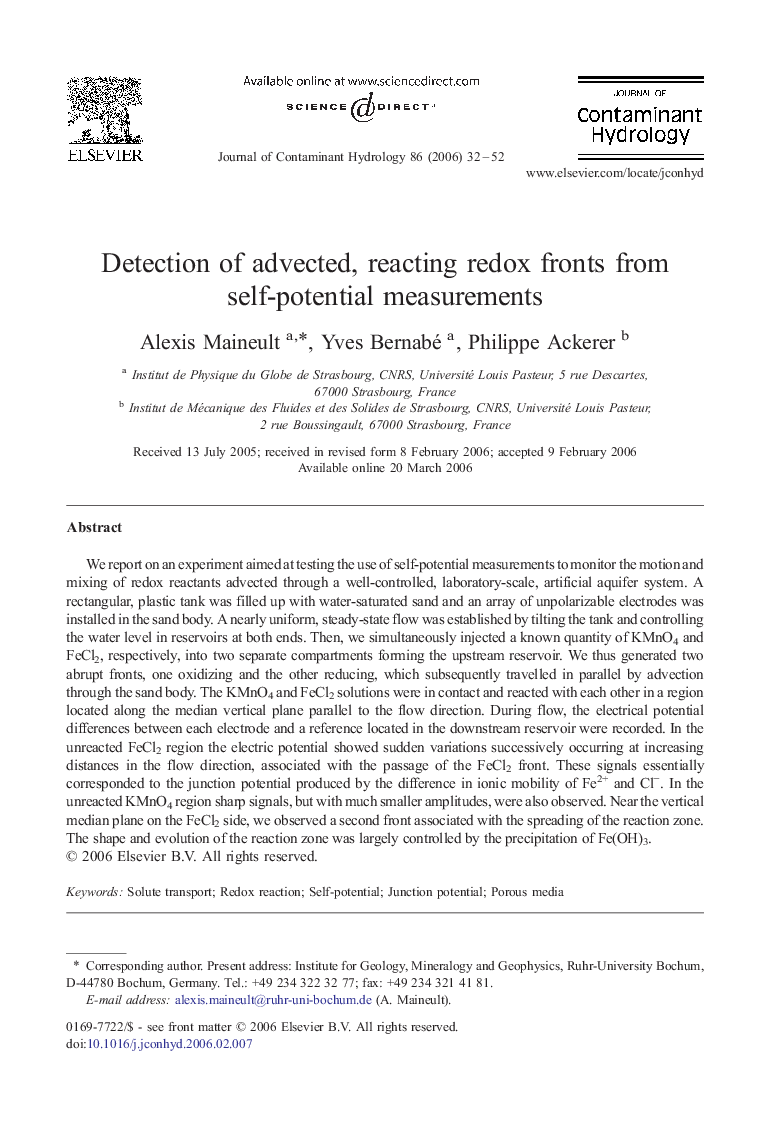| Article ID | Journal | Published Year | Pages | File Type |
|---|---|---|---|---|
| 4547717 | Journal of Contaminant Hydrology | 2006 | 21 Pages |
We report on an experiment aimed at testing the use of self-potential measurements to monitor the motion and mixing of redox reactants advected through a well-controlled, laboratory-scale, artificial aquifer system. A rectangular, plastic tank was filled up with water-saturated sand and an array of unpolarizable electrodes was installed in the sand body. A nearly uniform, steady-state flow was established by tilting the tank and controlling the water level in reservoirs at both ends. Then, we simultaneously injected a known quantity of KMnO4 and FeCl2, respectively, into two separate compartments forming the upstream reservoir. We thus generated two abrupt fronts, one oxidizing and the other reducing, which subsequently travelled in parallel by advection through the sand body. The KMnO4 and FeCl2 solutions were in contact and reacted with each other in a region located along the median vertical plane parallel to the flow direction. During flow, the electrical potential differences between each electrode and a reference located in the downstream reservoir were recorded. In the unreacted FeCl2 region the electric potential showed sudden variations successively occurring at increasing distances in the flow direction, associated with the passage of the FeCl2 front. These signals essentially corresponded to the junction potential produced by the difference in ionic mobility of Fe2+ and Cl−. In the unreacted KMnO4 region sharp signals, but with much smaller amplitudes, were also observed. Near the vertical median plane on the FeCl2 side, we observed a second front associated with the spreading of the reaction zone. The shape and evolution of the reaction zone was largely controlled by the precipitation of Fe(OH)3.
